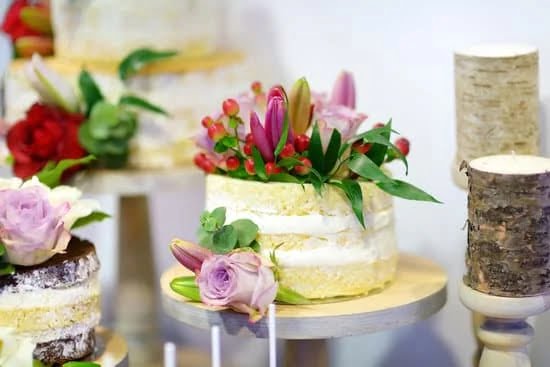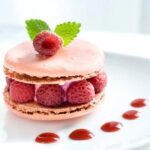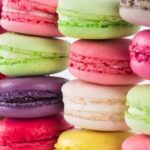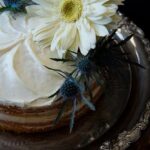Are you looking to learn how to decorate cakes? Cake decoration has a long and colorful history, with origins dating back to ancient civilizations. Today, it plays a significant role in the art of baking, not only adding visual appeal but also enhancing the overall taste and texture of the cake.
In order to master the art of cake decorating, it’s important to have the essential tools and equipment. From piping bags and tips to offset spatulas and turntables, each tool serves a unique purpose in creating beautiful cake designs. Knowing where to purchase quality cake decorating tools is crucial for anyone looking to take their cake decorating skills to the next level.
Understanding different types of frosting is also key in mastering cake decoration. With options ranging from buttercream and fondant to royal icing and ganache, each type has its own set of pros and cons. Choosing the right frosting for your cake can make all the difference in achieving your desired design and flavor profile.
As we delve deeper into this article, we’ll explore basic and advanced cake decorating techniques, tips for perfecting cake designs, troubleshooting common issues, and resources for further learning and inspiration. Whether you’re a beginner looking to get started or an experienced baker wanting to refine your skills, there’s something for everyone in the world of cake decorating.
Essential Tools for Cake Decorating
Cake decorating is a creative and rewarding art form that allows bakers to express their artistic talents while delighting the taste buds of cake connoisseurs. In order to achieve professional-looking cake designs, it is essential to have the right tools and equipment on hand. Whether you are a beginner or an experienced baker, having the necessary tools for cake decorating can make all the difference in turning a simple cake into a masterpiece.
List of Necessary Tools and Equipment
Some of the essential tools for cake decorating include piping bags and tips, offset spatula, turntable, bench scraper, cake leveler, fondant smoother, and various molds and cutters. Each of these tools serves a specific purpose in creating stunning cake designs, from smoothing frosting to shaping fondant and creating intricate details.
Importance of Each Tool in Cake Decorating
Piping bags and tips are crucial for adding decorative elements to cakes, such as borders, flowers, and lettering. An offset spatula helps in spreading frosting evenly on the cake layers, while a turntable allows for easy access to all sides of the cake during decoration. The bench scraper is useful for achieving smooth surfaces on frosted cakes, and a fondant smoother assists in achieving flawless finishes with fondant.
Where to Purchase Quality Cake Decorating Tools
There are many places where one can purchase quality cake decorating tools. Specialty baking stores often carry a wide range of products specifically tailored for cake decorators. Online retailers also offer an extensive selection of tools and equipment for purchase. It’s important to invest in high-quality tools that will last longer and provide better results when learning how to decorate cakes.
Understanding Different Types of Frosting
When it comes to cake decorating, choosing the right frosting is crucial in achieving the desired look and taste for your cake. There are several types of frosting commonly used in cake decoration, each with its own unique characteristics and applications.
- Buttercream: Buttercream is a classic frosting made from butter, powdered sugar, and flavorings. It is known for its creamy texture and versatility in piping various designs onto cakes. However, buttercream may not hold up well in warm temperatures and can be prone to melting.
- Fondant: Fondant is a smooth, pliable icing that can be rolled out and draped over cakes to create a flawless finish. It is ideal for creating intricate designs and can provide a sleek, modern look to cakes. On the downside, fondant may not appeal to those who prefer a softer texture or more traditional appearance for their cakes.
- Royal Icing: Royal icing is made from egg whites or meringue powder and confectioners’ sugar. It dries to a hard, glossy finish and is often used for delicate decorations such as piped flowers or intricate lacework on cakes. However, royal icing can be fragile and may not be suitable for covering large cake surfaces.
- Ganache: Ganache is a rich mixture of chocolate and cream that can be used as both filling and frosting for cakes. It provides a decadent flavor and smooth, glossy appearance when set. While ganache adds an elegant touch to cakes, it requires careful attention to achieve the right consistency for spreading or pouring.
Choosing the right type of frosting depends on factors such as the desired design, flavor preferences, environmental conditions, and overall aesthetic appeal of the cake. Experimenting with different frostings can help you determine which one works best for your specific cake decorating needs.
Basic Cake Decorating Techniques
When learning how to decorate cakes, it’s important to start with the basics. Mastering basic cake decorating techniques will give you a strong foundation for more advanced designs in the future.
Piping and Piping Tips
Piping is one of the most essential skills in cake decorating. It involves using a pastry bag and various piping tips to create intricate designs, borders, and lettering on cakes. There are different types of piping tips, each creating a unique design when used with the pastry bag. Some common tips include round, star, leaf, and petal tips. Learning how to control the pressure and angle of your piping bag is crucial for creating clean and precise designs.
Smooth Frosting Techniques
Achieving a smooth frosting on cakes can be challenging for beginners. However, this technique is essential for creating a professional-looking finish on your cakes. One method for achieving smooth frosting is called the “crumb coat,” which involves applying a thin layer of frosting to seal in any loose crumbs before applying the final layer of frosting. Another technique uses a bench scraper or offset spatula to achieve an even and polished surface.
Creating Basic Borders and Textures
Adding borders and textures to your cake can enhance its overall appearance. Common border techniques include using a star tip to create shell borders or a round tip for bead borders. For textured designs, you can use tools such as combs or impression mats to create patterns on the surface of the cake. Experimenting with different techniques will give you a better understanding of how to add dimension and visual interest to your cake designs.
By mastering these basic cake decorating techniques, you’ll be well-equipped to tackle more advanced designs in the future. Remember that practice makes perfect when it comes to cake decorating, so don’t be afraid to experiment with different tools and methods until you find what works best for you.
Advanced Cake Decorating Techniques
Once you have mastered the basic cake decorating techniques, it’s time to elevate your skills and try more advanced methods to create stunning and intricate designs on your cakes. Here are some advanced cake decorating techniques to take your creations to the next level:
- Using fondant for intricate designs: Fondant allows you to create smooth and flawless surfaces on your cakes, making it the perfect medium for detailed designs like flowers, lace patterns, or even sculpted figures.
- Sculpting and shaping fondant: With the right tools and techniques, you can mold fondant into various shapes and forms to add dimension and visual interest to your cakes. From delicate ruffles to realistic-looking objects, the possibilities are endless.
- Incorporating edible decorations and embellishments: Edible decorations such as sugar flowers, chocolate shards, or hand-painted details can add a touch of elegance and sophistication to your cake designs. Experiment with different edible elements to enhance the aesthetic appeal of your creations.
These advanced cake decorating techniques require patience, precision, and practice. As you continue to hone your skills, don’t be afraid to push the boundaries of your creativity and experiment with new ideas. With dedication and determination, you’ll be able to create show-stopping cakes that will leave a lasting impression.
Remember that practice makes perfect when it comes to mastering advanced cake decorating techniques. Take the time to learn from tutorials, attend workshops, or seek inspiration from experienced decorators in order to continue improving your skills.
Tips for Perfecting Cake Designs
When it comes to making a stunning and delicious cake, decoration plays a crucial role in the overall appeal. But with so many options and techniques available, it can be overwhelming to know where to start. Here are some tips for perfecting cake designs that will help you create show-stopping desserts for any occasion.
One of the most important aspects of cake decorating is learning how to coordinate colors and designs effectively. Whether you’re using buttercream, fondant, or royal icing, understanding color theory and design principles can elevate your cake from ordinary to extraordinary. Take the time to study color combinations and practice different design elements to find a style that suits your taste and skills.
In addition to visual appeal, it’s essential to also consider the balance of flavors and aesthetics in your cake designs. Experiment with different flavor pairings and filling options that complement your chosen frosting and decorations.
For example, a rich chocolate cake may benefit from a lighter whipped cream frosting, while a tangy lemon cake could be enhanced by a zesty fruit filling. By incorporating both visual and flavor elements into your designs, you’ll create cakes that not only look amazing but taste incredible too.
Lastly, don’t be afraid to get creative with personalizing your cake designs. Whether it’s incorporating special messages, adding edible flowers, or experimenting with unique embellishments, adding a personal touch can make your cakes truly memorable.
Consider the recipient’s personality or the theme of the event when brainstorming ideas for personalized decorations – this extra thought and effort will not go unnoticed. These tips will help you take your cake decorating skills to the next level and create stunning confections that are sure to impress.
Troubleshooting Common Cake Decorating Issues
Cake decorating can be a fun and rewarding endeavor, but it also comes with its fair share of challenges. One common issue that many bakers encounter when decorating cakes is cracks in fondant. This can happen due to several reasons, such as rolling the fondant too thin or not kneading it properly. To avoid this problem, make sure to knead your fondant until it’s smooth and elastic, and roll it out to the appropriate thickness for your cake.
Another common problem is dealing with frosting that is either too runny or too stiff. If your frosting is too runny, try adding more powdered sugar to thicken it up. On the other hand, if your frosting is too stiff, you can add a small amount of milk or cream to achieve the right consistency. It’s important to gradually adjust the texture of your frosting until you reach the desired consistency for spreading and piping.
Lastly, fixing misshapen or uneven cake layers can be another headache for decorators. To address this issue, use a serrated knife to carefully trim any uneven parts of the cake before applying frosting. Additionally, consider using a cake leveler tool to ensure that each layer is perfectly even before moving on to decorate your cake.
| Common Issue | Troubleshooting Tip |
|---|---|
| Cracks in fondant | Knead fondant until smooth and roll out to appropriate thickness |
| Frosting too runny or too stiff | Gradually adjust texture by adding powdered sugar or milk/cream |
| Misshapen or uneven cake layers | Carefully trim uneven parts with serrated knife or use a cake leveler tool |
By following these troubleshooting tips, you’ll be better equipped to handle common cake decorating issues and create beautiful and professional-looking cakes every time.
Resources for Further Learning and Inspiration
In conclusion, cake decorating is a fascinating and essential aspect of the baking world. Whether it’s for a special occasion or just to satisfy a sweet tooth, a beautifully decorated cake can bring joy and delight to any gathering. By understanding the history and significance of cake decoration, learning about essential tools and techniques, and exploring advanced methods, anyone can hone their skills in creating stunning edible works of art.
For those interested in delving deeper into the world of cake decorating, it’s important to have the right tools and resources at your disposal. Understanding different types of frosting, mastering basic and advanced techniques, and troubleshooting common issues are all part of the journey. Additionally, seeking out further learning opportunities such as classes, workshops, online communities, and inspiring books and blogs can provide valuable insights and inspiration for perfecting your cake designs.
Ultimately, learning how to decorate cakes is an ongoing process that requires creativity, patience, and passion. With dedication and continued practice, anyone can develop the skills needed to create visually stunning and delicious confections that will be remembered for years to come. So whether you’re a beginner looking to get started or an experienced decorator seeking new ideas, there is always something new to learn in the world of cake decorating.
Frequently Asked Questions
What Is the Best Way to Decorate a Cake?
The best way to decorate a cake is to start with a smooth, even layer of frosting as the base. From there, you can use piping techniques, fondant, edible decorations, and icing to create your desired design.
What Are the 7 Different Cake-Decorating Techniques?
There are many cake-decorating techniques, but some of the most common include piping designs with buttercream or royal icing, using fondant to create shapes and textures, adding edible flowers or other decorations, airbrushing the cake for a colorful finish, and using stencils or molds for specific patterns.
What Are the Best Tips for Cake-Decorating?
Some of the best tips for cake decorating include making sure your frosting is the right consistency for easy spreading or piping, chilling the cake before decorating to make it easier to work with, using offset spatulas and bench scrapers for a smooth finish, and practicing different techniques to improve your skills over time.
Additionally, investing in good quality decorating tools and watching tutorials from experienced decorators can also be helpful in improving your cake-decorating abilities.

Welcome to our cake decorating blog! My name is Destiny Flores, and I am the proud owner of a cake decorating business named Cake Karma. Our mission is to provide delicious, beautiful cakes for all occasions. We specialize in creating custom cakes that are tailored specifically to each customer’s individual needs and tastes.





